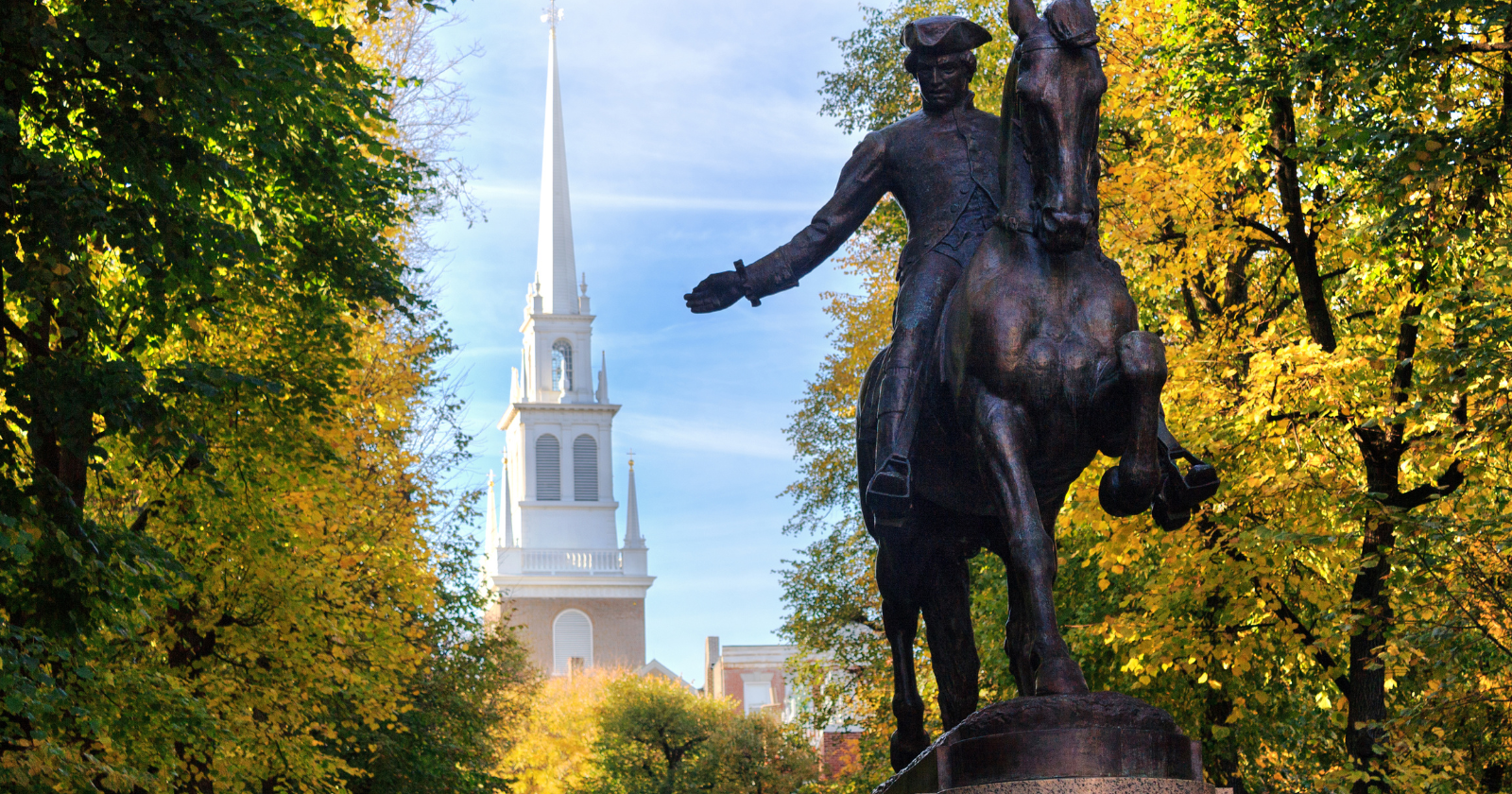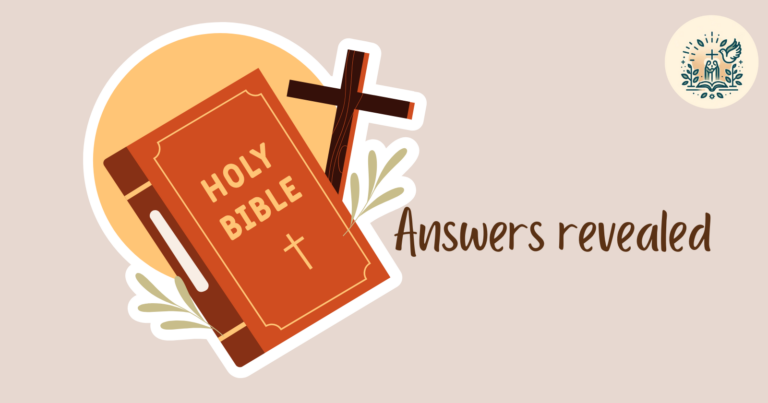The timeless tale of “The Midnight Ride of Paul Revere” by Henry Wadsworth Longfellow captures not just a historical moment, but profound spiritual and moral lessons.
‘Paul Revere’s Midnight Ride’ is a story of bravery, being ready, and making a difference when it really counts.
This ride shows us the Christian ethos of spiritual readiness and faith in divine guidance. It’s a call for us to trust in something bigger than ourselves.
In this article, we’ll overview and analyze Longfellow’s poem to see how Paul Revere’s adventure can teach us important lessons about faith, courage, and working together.
Who’s Paul Revere?
Paul Revere was a silversmith by trade, a member of the Sons of Liberty who played a crucial role in the American Revolution with his midnight ride on April 18, 1775.
He alerted the colonial militia to the approach of British forces before the battles of Lexington and Concord.
This act of bravery and quick thinking has become a symbol of the American spirit of resilience and the fight for independence.
Therefore, Revere’s legacy extends beyond his profession, embodying the impact one individual can have on the broader course of history through courage and timely action.
Overview of Longfellow’s poem
Henry Wadsworth Longfellow (1807-1882) was born in Portland, Maine, and was the most famous American poet of the nineteenth century.
A noted scholar and Harvard professor, he was a prolific writer and was widely published both here and abroad.
One of his finest works was his English translation of Dante’s Divine Comedy. But besides, Longfellow’s work is known for its rich portrayal of American history and its characters.
“The Midnight Ride of Paul Revere,” one of his most famous pieces, captures the tension and urgency of a pivotal night that marked a turning point in the American quest for independence.
Through rhythmic storytelling and vivid imagery, Longfellow immortalizes Revere’s ride, highlighting the themes of bravery, sacrifice, and the collective spirit of a nation on the brink of revolution.
This poem not only recounts a historical event but also celebrates the enduring American values of freedom and resilience.
Let’s take a look at the poem:
The Midnight Ride of Paul Revere
Listen my children and you shall hear
Of the midnight ride of Paul Revere,
On the eighteenth of April, in Seventy-five;
Hardly a man is now alive
Who remembers that famous day and year.He said to his friend, “If the British march
By land or sea from the town to-night,
Hang a lantern aloft in the belfry arch
Of the North Church tower as a signal light,
One if by land, and two if by sea;
And I on the opposite shore will be,
Ready to ride and spread the alarm
Through every Middlesex village and farm,
For the country folk to be up and to arm.”Then he said “Good-night!” and with muffled oar
Silently rowed to the Charlestown shore,
Just as the moon rose over the bay,
Where swinging wide at her moorings lay
The Somerset, British man-of-war;
A phantom ship, with each mast and spar
Across the moon like a prison bar,
And a huge black hulk, that was magnified
By its own reflection in the tide.Meanwhile, his friend through alley and street
Wanders and watches, with eager ears,
Till in the silence around him he hears
The muster of men at the barrack door,
The sound of arms, and the tramp of feet,
And the measured tread of the grenadiers,
Marching down to their boats on the shore.Then he climbed the tower of the Old North Church,
By the wooden stairs, with stealthy tread,
To the belfry chamber overhead,
And startled the pigeons from their perch
On the sombre rafters, that round him made
Masses and moving shapes of shade,
By the trembling ladder, steep and tall,
To the highest window in the wall,
Where he paused to listen and look down
A moment on the roofs of the town
And the moonlight flowing over all.Beneath, in the churchyard, lay the dead,
In their night encampment on the hill,
Wrapped in silence so deep and still
That he could hear, like a sentinel’s tread,
The watchful night-wind, as it went
Creeping along from tent to tent,
And seeming to whisper, “All is well!”
A moment only he feels the spell
Of the place and the hour, and the secret dread
Of the lonely belfry and the dead;
For suddenly all his thoughts are bent
On a shadowy something far away,
Where the river widens to meet the bay,
A line of black that bends and floats
On the rising tide like a bridge of boats.Meanwhile, impatient to mount and ride,
Booted and spurred, with a heavy stride
On the opposite shore walked Paul Revere.
Now he patted his horse’s side,
Now he gazed at the landscape far and near,
Then, impetuous, stamped the earth,
And turned and tightened his saddle girth;
But mostly he watched with eager search
The belfry tower of the Old North Church,
As it rose above the graves on the hill,
Lonely and spectral and sombre and still.
And lo! as he looks, on the belfry’s height
A glimmer, and then a gleam of light!
He springs to the saddle, the bridle he turns,
But lingers and gazes, till full on his sight
A second lamp in the belfry burns.A hurry of hoofs in a village street,
A shape in the moonlight, a bulk in the dark,
And beneath, from the pebbles, in passing, a spark
Struck out by a steed flying fearless and fleet;
That was all! And yet, through the gloom and the light,
The fate of a nation was riding that night;
And the spark struck out by that steed, in his flight,
Kindled the land into flame with its heat.
He has left the village and mounted the steep,
And beneath him, tranquil and broad and deep,
Is the Mystic, meeting the ocean tides;
And under the alders that skirt its edge,
Now soft on the sand, now loud on the ledge,
Is heard the tramp of his steed as he rides.It was twelve by the village clock
When he crossed the bridge into Medford town.
He heard the crowing of the cock,
And the barking of the farmer’s dog,
And felt the damp of the river fog,
That rises after the sun goes down.It was one by the village clock,
When he galloped into Lexington.
He saw the gilded weathercock
Swim in the moonlight as he passed,
And the meeting-house windows, black and bare,
Gaze at him with a spectral glare,
As if they already stood aghast
At the bloody work they would look upon.It was two by the village clock,
When he came to the bridge in Concord town.
He heard the bleating of the flock,
And the twitter of birds among the trees,
And felt the breath of the morning breeze
Blowing over the meadow brown.
And one was safe and asleep in his bed
Who at the bridge would be first to fall,
Who that day would be lying dead,
Pierced by a British musket ball.You know the rest. In the books you have read
How the British Regulars fired and fled,
How the farmers gave them ball for ball,
From behind each fence and farmyard wall,
Chasing the redcoats down the lane,
Then crossing the fields to emerge again
Under the trees at the turn of the road,
And only pausing to fire and load.So through the night rode Paul Revere;
And so through the night went his cry of alarm
To every Middlesex village and farm,
A cry of defiance, and not of fear,
A voice in the darkness, a knock at the door,
And a word that shall echo for evermore!
For, borne on the night-wind of the Past,
Through all our history, to the last,
In the hour of darkness and peril and need,
The people will waken and listen to hear
The hurrying hoof-beats of that steed,
And the midnight message of Paul Revere.
How Paul Revere teaches you to trust in God’s plan
1. Be prepared for God’s timing
“Listen my children and you shall hear Of the midnight ride of Paul Revere,” begins the legendary tale that reminds us of the importance of being prepared for God’s timing.
Revere’s readiness to ride at a moment’s notice, with lanterns signaling whether to expect the British by land or sea, is a profound example of preparedness meeting opportunity.
In life, we often find ourselves waiting for a sign or the right moment to act. Yet, the story of Paul Revere teaches us that the right moment is not always announced with clarity.
Believe it or not, God’s timing can be as unpredictable as the events leading up to the American Revolution.
It’s about being ready, much like Revere was, to move when the call comes, trusting that God has prepared us for the moment ahead, even if it’s not on our expected schedule.
2. Have courage in the face of adversity
Facing adversity with courage is a theme that resonates deeply within Longfellow’s poem.
“Ready to ride and spread the alarm through every Middlesex village and farm,” Paul Revere knew the risks of his mission.
The courage to ride into the night, aware of the dangers that lay ahead, is a testament to trusting in a plan greater than oneself.
Let’s face it, standing firm in the face of adversity is daunting. It requires a belief in something beyond our immediate understanding.
Revere’s ride is a reminder that courage is not the absence of fear but the determination to move forward despite it.
Maybe, like Revere, you’re facing a challenge that seems insurmountable.
After all, it’s in these moments of trial that faith becomes our guiding light, encouraging us to press on, even when the path ahead is shrouded in darkness.
3. Value unity and collective action
Now, I want you to think about something:
When was the last time you felt truly part of something bigger than yourself?
Well, Paul Revere’s midnight ride wasn’t a solo mission. Instead, it sparked a collective movement that rallied the Minutemen and eventually, an entire nation.
This moment in history is a powerful testament to the strength found in unity.
When Revere alerted the countryside, each individual’s response contributed to a larger, collective action against a common threat.
It shows us that while our individual contributions may seem modest, together, they create an unstoppable force.
In our lives, this could mean collaborating with others to achieve a common goal, supporting a community project, or simply coming together in prayer.
By valuing unity and collective action, we align ourselves with God’s plan, recognizing that together, we are stronger and capable of overcoming even the greatest challenges.
4. Recognize the power of one
Interestingly, while “The Midnight Ride of Paul Revere” champions collective action, it also underscores the impact of individual initiative.
Think about it: one person, one night, and one ride that echoed through the annals of history.
Yes, Paul Revere’s journey is a stellar example of how significant a single action can be.
On that April night, Revere’s decision to ride out, despite the dangers, fundamentally altered the course of events leading to American independence.
This wasn’t just about speed or stealth — it was about conviction, the belief in a cause worth risking everything for.
His ride teaches us that we, too, have the power to make a difference, no matter how insurmountable the odds may seem.
5. Embrace your role in God’s legacy
Every one of us has a part to play in the grand tapestry of life, a unique contribution that shapes the future.
Paul Revere’s midnight ride serves as a vivid reminder of this truth.
By embracing his role in a critical moment of history, Revere became more than just a man — he became a symbol of hope and action.
His story encourages us to consider our own place in God’s legacy.
What role are we called to play?
It might not involve a midnight ride or a lantern’s glow, but in every act of kindness, every pursuit of justice, and every moment of faith, we contribute to a legacy much greater than ourselves.
That’s why we should recognize that our lives are intertwined with a divine plan, one that calls for us to be brave, to stand up for what we believe in, and to make our mark with the gifts we’ve been given.
What ignites change?
“And the spark struck out by that steed, in his flight, Kindled the land into flame with its heat.”
This line from Longfellow’s poem encapsulates the essence of how a single action can ignite sweeping change across a nation.
Paul Revere’s ride, as depicted in the poem, was not just a solitary act of defiance; it was the catalyst that united the colonies in their fight for independence.
Wondering what’s the thing that this “spark” symbolizes?
Well, it’s the power of one moment, one decision, to inspire a collective movement toward freedom and justice.
The importance of this message cannot be overstated — it reminds us that significant shifts often begin with small acts.
Whether it’s standing up for what is right, sharing a word of encouragement, or making a difficult choice, our actions have the potential to ignite change far beyond our immediate surroundings.
Just as Revere’s ride rallied the American colonists, so too can our individual contributions inspire movements within our communities today.
Final takeaway: Embrace the journey ahead
As we reflect on “The Midnight Ride of Paul Revere,” it’s clear that the poem offers more than just a historical recounting.
Revere’s midnight ride, immortalized by Henry Wadsworth Longfellow, teaches us more than history.
It’s a call to action, a reminder of the power within us to shape our destinies and the world around us.
As we reflect on the lessons learned from this pivotal moment, let’s carry forward the spirit of courage, unity, and faith into our own lives.
- Be prepared: Life is unpredictable, but readiness and faith equip us for whatever comes our way.
- Act with courage: Facing adversity with bravery can lead to unexpected victories and growth.
- Acknowledge your impact: Never underestimate the power of one person’s actions to inspire change.
- Seek unity: Together, we can achieve more than we can alone, building communities rooted in support and love.
- Fulfill your role: Every one of us has a purpose in God’s grand design, contributing to a legacy that transcends time.
Remember that the ride ahead is yours to take, filled with opportunities to live boldly, love deeply, and leave a mark on the world that echoes through generations.








